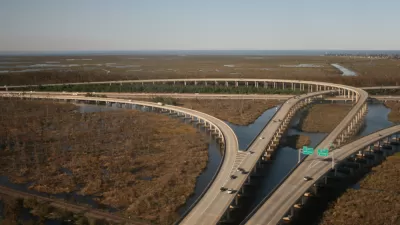As cities around the world face the effects of climate change head on, they have been pushing policy forward and taking action at the local level. But they are also creating networks that have a much broader impact beyond individual cities.

Cornelia Colijn considers the reasons cities are leaders in climate change policy. One reason is that cities are not mobile and compared to individuals who can relocate to avoid threats. "This means that as the effects of climate change take root in our urban areas, cities are forced to be early adopters to cutting edge adaptation strategies. In other words, cities cannot run, but must stand and fight,” says Colijn.
At the city level, it would make sense for cities to focus on adaptation rather than mitigation. But they tend to institute mitigation strategies because residents and public officials view the universal value of climate change policies and because cities participate in fair-share agreements like the Paris Agreement. Cities might also pursue mitigation efforts because of the related benefits, such as improvements in public health.
In addition, networks of cities are a way to challenge national and global governments and institutions to address climate change. "In a future where it is all-too-likely that climate action will be insufficient, creating a network of like-minded urban areas may be the key organizing challenge facing cities that want to do something to respond to climate change," notes Colijn.
FULL STORY: Early adopters in confronting climate: cities

Alabama: Trump Terminates Settlements for Black Communities Harmed By Raw Sewage
Trump deemed the landmark civil rights agreement “illegal DEI and environmental justice policy.”

Planetizen Federal Action Tracker
A weekly monitor of how Trump’s orders and actions are impacting planners and planning in America.

The 120 Year Old Tiny Home Villages That Sheltered San Francisco’s Earthquake Refugees
More than a century ago, San Francisco mobilized to house thousands of residents displaced by the 1906 earthquake. Could their strategy offer a model for the present?

In Both Crashes and Crime, Public Transportation is Far Safer than Driving
Contrary to popular assumptions, public transportation has far lower crash and crime rates than automobile travel. For safer communities, improve and encourage transit travel.

Report: Zoning Reforms Should Complement Nashville’s Ambitious Transit Plan
Without reform, restrictive zoning codes will limit the impact of the city’s planned transit expansion and could exclude some of the residents who depend on transit the most.

Judge Orders Release of Frozen IRA, IIJA Funding
The decision is a victory for environmental groups who charged that freezing funds for critical infrastructure and disaster response programs caused “real and irreparable harm” to communities.
Urban Design for Planners 1: Software Tools
This six-course series explores essential urban design concepts using open source software and equips planners with the tools they need to participate fully in the urban design process.
Planning for Universal Design
Learn the tools for implementing Universal Design in planning regulations.
Clanton & Associates, Inc.
Jessamine County Fiscal Court
Institute for Housing and Urban Development Studies (IHS)
City of Grandview
Harvard GSD Executive Education
Toledo-Lucas County Plan Commissions
Salt Lake City
NYU Wagner Graduate School of Public Service





























